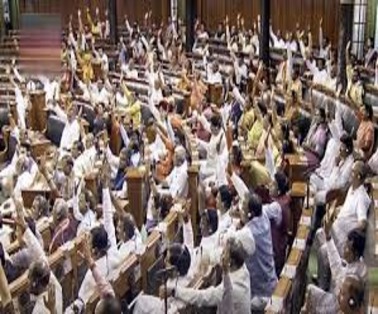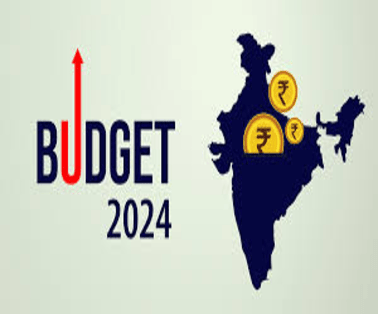The no confidence motion moved by the Opposition against the NDA government led by Prime Minister Narendra Modi was defeated in the Lok Sabha
Key Points on the No Confidence Motion
- The NDA defeated the no-confidence motion comfortably with a voice vote in the Lok Sabha.
- The opposition moved a no-confidence motion against the Modi government on July 26 which was taken up by Lok Sabha Speaker Om Birla.
- The three days of the motion witnessed a fierce battle between the ruling and the Opposition coalitions over the Manipur violence and other raging issues.
- This is the second time Prime Minister Narendra Modi faced a no-confidence motion.
- The first such motion against the Modi government was introduced in 2018 over granting a special category status to Andhra Pradesh which was later defeated.
- The NDA has a commendable majority with a number of 331 MPs out of which the BJP has 303 MPs while the combined strength of the Opposition bloc I.N.D.I.A is 144.
What Is A No Confidence Motion?
- In a parliamentary democracy, a government can be in power only if it commands a majority in the directly elected House.
- Article 75(3) of our Constitution embodies this rule by specifying that the Council of Ministers are collectively responsible to the Lok Sabha.
- For testing this collective responsibility, the rules of Lok Sabha provide a particular mechanism – a motion of no-confidence.
Process Of Moving a No Confidence Motion
- Any Lok Sabha MP, who can garner the support of 50 colleagues, can, at any point of time, introduce a motion of no-confidence against the Council of Ministers.
- Thereafter, a discussion on the motion takes place. MPs who support the motion highlight the government’s shortcomings, and the Treasury Benches respond to the issues they raise.
- Finally, a vote takes place – in case the motion carries, the government is bound to vacate the office.
- A no confidence motion can only be moved in the Lok Sabha
History of No Confidence Motions in India
- The first ever no-confidence motion was moved in the third Lok Sabha in August 1963 against Prime Minister Jawaharlal Nehru by Congress leader Acharya Kripalani.
- This was immediately after losing to China in the 1962 war. The debate went on for four days, for over 20 hours.
- Eventually, the motion was defeated, with only 62 MPs supporting it and 347 opposing it.
- Indira Gandhi, a Rajya Sabha MP at the time took over as the Prime Minister in January 1966. A no-confidence motion against her government was moved by Communist Party of India MP Hirendranath Mukherjee.
- The motion was supported by 61 MPs, while 270 MPs opposed it and the motion was defeated.
- In all, Indira Gandhi faced 15 motions during her 16-year tenure (1966-77 and then from 1980 to her assassination in October 1984) as prime minister.
- In a first, in July 1979, a government was dislodged after a no-confidence motion. The motion was moved against Morarji Desai government by YB Chavan. Even though the debate remained inconclusive, Desai resigned from his post and retired from politics.
- This was the only time a government fell following a no-confidence motion, even as there was no voting on the motion.
- Thrice governments have fallen during the vote of confidence – the VP Singh government in 1990, H D Devegowda government in 1997 and Atal Bihari Vajpayee government in 1999.
- Since then, there have been 26 more no-confidence motions moved in the parliament (not counting the latest one), with the last one being in 2018, moved by the TRS against the previous Narendra Modi government
Different Types of Motions in Indian Parliament
Adjournment Motion: A motion for adjournment is moved to discuss a definite matter of urgent public importance and must be of immediate concern, with the Speaker’s consent. This motion is available in the Lok Sabha but not in the Rajya Sabha.
Closure Motion: It is a motion moved by a member to cut short the debate on a matter before the House. If the motion is approved by the House, debate is stopped forthwith, and the matter is put to vote.
Motion with a Vote: This type of motion is brought under Rule 184 in the Lok Sabha. It allows for a debate with a vote on a specific question, and the outcome of the vote determines Parliament’s position on the issue.
Short Duration Discussion: Under Rule 193 of the Lok Sabha rules and Rule 176 of the Rajya Sabha rules, short duration discussions can take place. A short duration discussion allows MPs to discuss a specific issue of public importance without voting on it. The debate usually takes place for a fixed duration, not exceeding two hours.
Confidence Motion: It is passed when the governments formed with wafer-thin majority have been called upon by the President to prove their majority on the floor of the House
Privilege Motion: A member can initiate this motion when they believe a minister has violated the privileges of the House or its members by withholding crucial information about a case or providing inaccurate and manipulated facts.
Motion of Thanks: It is a parliamentary procedure to express gratitude for the President’s Address at the commencement of Lok Sabha. At the end of the discussion, the motion is put to vote. This motion must be passed in the House. Otherwise, it amounts to the defeat of the government.
Cut Motion: Proposed to reduce the amount of a demand in the budget. Their passage by the Lok Sabha amounts to the expressions of want of parliamentary confidence in the government and may lead to its resignation.
To Download Monthly Current Affairs PDF Click here
Click here to get a free demo
Everything About CLAT 2025



